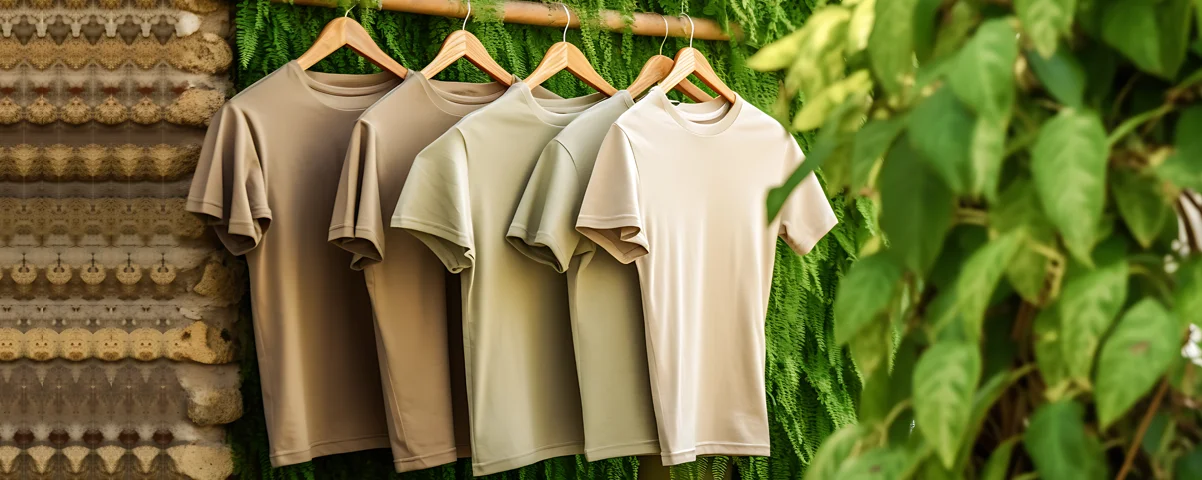Cape Town Sustainable Fashion Designers Leading the Eco-friendly Motion
Cape Town Sustainable Fashion Designers Leading the Eco-friendly Motion
Blog Article
Remain Ahead of the Curve by Discovering Cutting-edge Style Patterns
In a sector as dynamic as style, remaining in advance involves even more than simply adhering to present fads-- it requires an expedition of development. The merging of innovation and style declares a brand-new age of customer interaction.

Welcoming Smart Textiles
Recently, the fashion business has observed a transformative change with the assimilation of wise textiles, a sophisticated advancement that blends technology with material. This evolution represents not only a combination of visual appeals and capability but likewise a substantial jump towards sustainability and personalization in vogue. Smart fabrics, likewise recognized as e-textiles, embed sophisticated electronics such as sensing units and conductive strings within the textile, enabling garments to communicate with the setting or the user.
These textiles are developed to keep track of physiological parameters, such as heart price or body temperature level, providing real-time health and wellness analytics. Past health applications, wise textiles are likewise being utilized for flexible clothes, which can change color or pattern in response to ecological stimulations, hence supplying a vibrant style experience.
Furthermore, the development of energy-harvesting textiles that generate power from movement or sunlight is paving the method for self-dependent wearable innovation. This technology is interesting environmentally aware customers and developers intending to lower the ecological footprint of fashion. As research and growth in this field advance, clever textiles are anticipated to come to be progressively common, reshaping the landscape of modern-day fashion with their multifunctional capabilities.
The Increase of 3D Printing
Revolutionizing the manufacturing landscape, 3D printing has become a game-changer in the fashion market. This sophisticated modern technology has enabled developers to press the boundaries of creativity, generating detailed and personalized garments that were previously unbelievable. By leveraging electronic design and additive production, 3D printing helps with the production of complex geometries and patterns, permitting designers to experiment with brand-new textures and structures.
A significant advantage of 3D printing in fashion is its capacity to produce on-demand, lessening waste and minimizing stock needs. This performance not just optimizes production procedures yet also enables rapid prototyping, allowing developers to bring their visions to life in a much shorter timeframe. In addition, 3D printing sustains modification to a degree unmatched by standard methods, using personalized fits and unique layouts tailored to private consumer preferences.
The surge of 3D printing has actually also democratized fashion, making it obtainable to emerging developers that can currently fabricate top quality pieces without considerable monetary investment in typical production framework. As modern technology remains to advance, the garment industry is positioned to harness the full potential of 3D printing, checking out brand-new products and techniques that will undoubtedly redefine exactly how style is conceived and created.
Lasting Style Advancements
As the apparel industry comes to grips with journalism demand for ecological obligation, lasting fashion innovations have emerged at the leading edge of transformative change. The growing understanding of environmental influence has actually fueled a change in the direction of even more eco-conscious techniques and materials. Brand names and developers are now prioritizing sustainability, including methods that reduce waste and lower carbon footprints.
One substantial development is the rise of circular style, which highlights recycling and upcycling to prolong the lifecycle of garments. This approach not only reduces waste but also urges consumers to take on a more conscious technique to clothing usage. Additionally, the usage of lasting materials, such as organic cotton, hemp, and recycled polyester, has gained traction. These materials need less water and energy throughout manufacturing, considerably minimizing environmental influence.
An additional advancement depends on the adoption of innovative dyeing techniques that utilize natural dyes or waterless procedures, consequently minimizing the huge amounts of water and chemicals typically used in textile dyeing. Moreover, innovations in biotechnology have actually resulted in the development of lab-grown leather and materials, providing cruelty-free and ecologically friendly options to traditional materials. With these introducing efforts, the garment industry is making purposeful strides towards a more lasting future.

Tech-Integrated Garments
Tech-integrated Homepage garments represents a groundbreaking fusion of fashion and modern technology, improving just how people connect with their clothes. This ingenious domain name is noted by the inclusion of smart fabrics and ingrained digital parts, boosting both functionality and aesthetic allure. From fitness trackers installed in sports apparel to heated coats managed via smart device applications, tech-integrated garments provides customers unmatched benefit and versatility.
Pioneering brand names are driving this fad, concentrating on creating garments that reply to ecological stimulations or individual commands. As an example, some garments can transform color or pattern in reaction to temperature level shifts, while others integrate biometric sensing units to monitor wellness metrics like heart price or stress degrees. The smooth combination of technology right into fabrics likewise extends to environmental sustainability, with initiatives to establish self-cleaning materials or garments that adjust to weather problems, therefore lessening the need for multiple layers.
Additionally, the arrival of wearable innovation is not simply restricted to garments but Extra resources extends to accessories like watches and glasses, more broadening the scope of tech-integrated style. As the sector continues to introduce, the possibility for personalization and customization in garments expands, offering consumers distinct, tech-enhanced fashion experiences that accommodate their specific needs and preferences.
Future of Virtual Fashion
In the last few years, the future of online style has become a transformative force within the market, leveraging improvements in digital innovation to redefine exactly how fashion is produced, experienced, and eaten. By incorporating enhanced truth (AR), online reality (VIRTUAL REALITY), and 3D style tools, designers can currently craft immersive and interactive experiences that transcend standard fashion borders. Digital fashion allows for the development of garments that exist only in electronic atmospheres, supplying limitless possibilities for development without the restrictions of physical manufacturing.
This digital shift not only offers opportunities for innovative expression however also addresses sustainability problems intrinsic in traditional style methods. Cape Town Sustainable Fashion. By removing the demand for physical resources, virtual style decreases waste and lessens carbon impacts. Furthermore, the surge of digital style lines up with the raising consumer demand for special and customized experiences, as digital garments can be tailored and customized to specific choices with simplicity

Verdict
The fashion market's future lies in the combination of sustainable techniques and cutting-edge innovations. Online fashion is poised to redefine consumer communications.
In recent years, the fashion sector has actually experienced a transformative shift with the combination of smart fabrics, an advanced innovation that blends technology with textile.As the style industry grapples with the pushing requirement for environmental responsibility, lasting fashion developments have actually arised at the leading edge of transformative modification.In recent years, the future of online style has actually arised as a transformative force within the industry, leveraging advancements in digital innovation to redefine just how fashion is developed, experienced, and taken in. The increase of digital fashion straightens with the increasing customer need for tailored and special experiences, as digital garments can be personalized and customized to private choices with simplicity.
The fashion sector's future lies in the assimilation of sustainable techniques and ingenious modern technologies.
Report this page